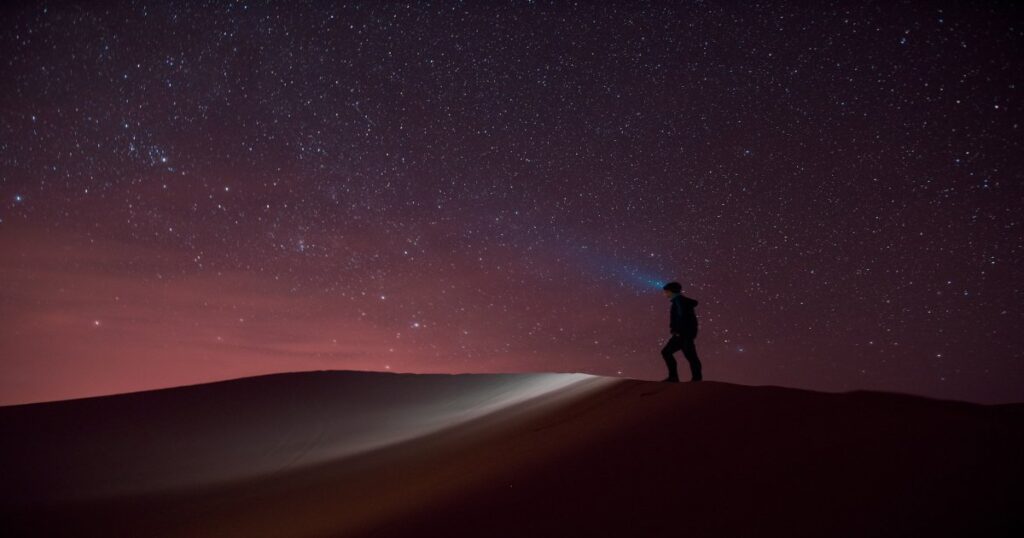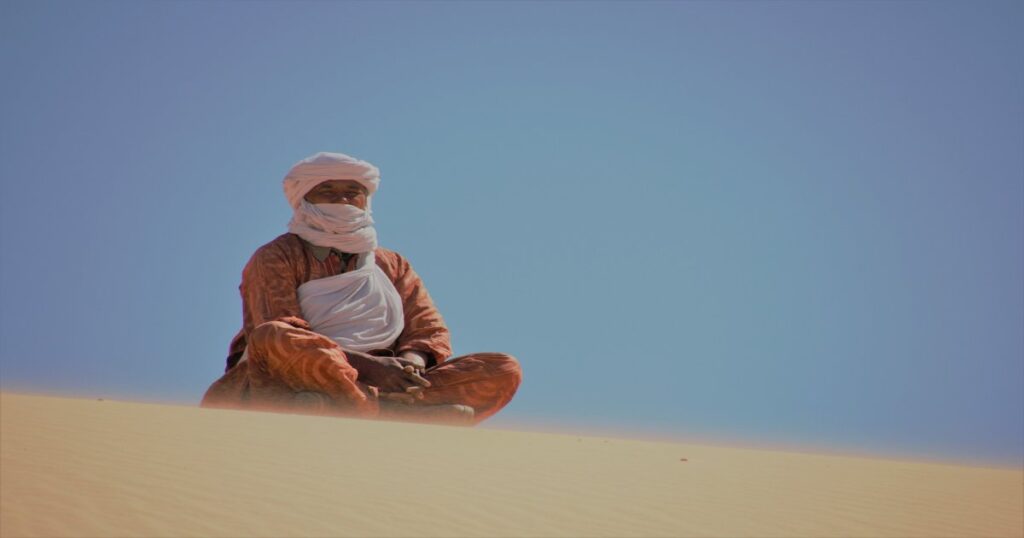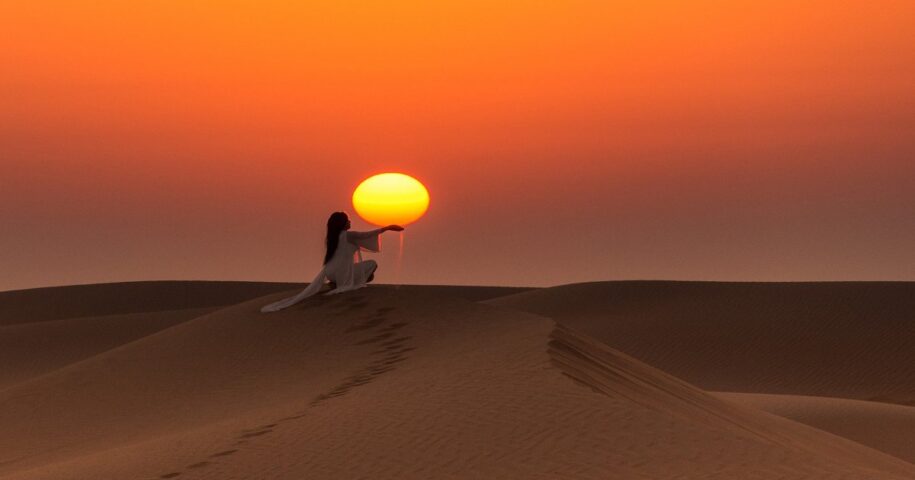The Sahara desert of Morocco is known for its harsh climate and extreme temperature. Temperatures in the region can reach high levels during the day, and drop significantly at night. This creates an environment that is difficult to survive in, yet surprisingly contains numerous species of animals and plants that have adapted to these conditions. While temperatures vary greatly throughout the year, depending on the season, visiting this desert presents a unique experience that cannot be found anywhere else. In this article, we will look at the temperatures experienced in the Sahara desert of Morocco, when it is best to visit, and what one can expect from a visit there.
The temperature of the Sahara desert during the day
During the day in the Sahara Desert of Morocco, temperatures often exceed 100 degrees Fahrenheit. This extreme heat is a result of the desert’s location on the Tropic of Cancer and its proximity to the equator. It’s no surprise that when there is little to no cloud cover, temperatures can soar over 120 degrees Fahrenheit. During these times, it is advised that tourists take extra precautionary measures to protect themselves from sunburn and dehydration. This includes wearing hats, sunglasses, and light clothing as well as drinking plenty of water throughout the day.
In some areas such as the Merzouga Desert, temperatures can be even higher due to their elevation which explains why there are so few plants and animals living in this region. Despite these extreme temperatures during the day, nights in this area may be surprisingly cold with lows dipping below freezing at night for much of the winter season.
The temperature of the Sahara desert during the night
As the sun sets down in Morocco, a chill descends on the once-scorching sand dunes, reminding residents of their need for additional layers. As night falls across the Sahara desert, temperatures can drop from scorching to near-freezing in a matter of hours. This extreme temperature swing is due to the dry air and high altitude found in the region – with no clouds to trap heat or humidity to retain it, temperatures plunge quickly after sunset. The average nighttime low temperature for a Saharan summer night hovers around 68°F (20°C) although some areas may experience lows as low as 43°F (6°C). Preparing warm clothing for any Saharan excursions is essential given these drastic swings in temperature. Additionally, evenings bring winds which further cool off already chilly temperatures. To stay warm at night, locals traditionally use thick blankets and sleep under canopies made of animal hide and plant fibers.

The temperature of the Sahara desert during summer
The scorching heat of the summer months blankets the sandy landscape, creating an intense atmosphere perfect for baking bread and brewing tea. In Morocco’s Sahara Desert, temperatures can reach up to 50°C during peak season, making it one of the most extreme climates in the world. Even at night time, due to its proximity to the equator and lack of vegetation, temperatures remain very high with little respite from the relentless heat. People who live in this arid region must seek shelter under large awnings or tents during midday hours when temperatures become unbearable and have adapted their lifestyles accordingly. Being able to survive such a severe climate is a testament to human resilience and ingenuity as people have found ways to cope with these extreme conditions.
The temperature of the Sahara desert during winter
In winter, the air in this arid region cools to a point that can be likened to an oasis in an otherwise scorching desert. During the coldest months of the year, temperatures drop below freezing and the Sahara desert becomes a frozen wasteland. The average temperature during winter ranges between 10 degrees Celsius at night and 20 degrees Celsius during midday. During wintertime, it is possible to experience:
- A dramatic decrease in humidity as moisture evaporates from the air
- Unpredictable snowfall or frost
- Clear skies with beautiful stars shining like diamonds in the night sky
The cold weather creates an atmosphere that is both harsh and inviting; while there can be strong winds and dust storms, these are usually accompanied by stunning sunsets and invigorating fresh air. People who live in this area tend to have a deep appreciation for nature and its beauty even when conditions are not ideal.
When is the best time to visit the Sahara desert of Morocco?
Visiting the arid region of Morocco in the Sahara desert is best done during autumn or spring when temperatures are cooler and more comfortable. Temperatures in this region can reach extreme levels during summer, with average highs around 50°C (120 v°F). During winter months, temperatures drop to a more pleasant average of 18°C (65°F). No matter which season you choose for your visit, it is important that visitors dress appropriately and bring plenty of water. Contact us and plan your trip to the Sahara desert of Morocco!

Additionally, it may be beneficial to research the area before visiting in order to learn about the culture and customs. Being familiar with local etiquette will help facilitate an enjoyable experience while ensuring that visitors remain respectful of Moroccan traditions. As long as visitors take appropriate precautions, they should find that their trip to this unique part of the world is rewarding and memorable.
Frequently Asked Questions
The average humidity in the Sahara desert of Morocco is approximately 10 to 30%. This dry climate is due to its location in the subtropics, with strong atmospheric circulation and very little precipitation. It can be a difficult environment for many species to survive, but it also has a beauty that captivates visitors from around the world.
The average wind speed in the Sahara desert of Morocco is between 5 and 10 kilometers per hour. Occasional strong gusts of wind can reach up to 40 kilometers per hour, but these are not frequent.
The Sahara desert of Morocco is a beautiful area that experiences significant variation in temperature depending on location. The northern parts experience cooler temperatures than the southern regions, which are typically much warmer. The altitude and distance from the coast also have an effect on temperature.
Visiting the Sahara desert of Morocco can pose health risks, such as dehydration and sunburn due to the extreme heat. The arid climate may also lead to respiratory problems from dust and sand storms. Other potential issues include insect-borne diseases or exposure to dangerous wildlife. Taking precautions can help minimize these risks.
The Sahara desert of Morocco is home to a multitude of unique wildlife species, from the majestic desert fox or Fennec to the endangered Saharan cheetah. While these creatures may evoke awe and wonder in any onlooker, it is important to remember that each species plays an important role in the delicate ecosystem of this harsh environment.
Conclusion
The Sahara desert of Morocco is one of the hottest regions on earth with temperatures that can soar above 100 degrees Fahrenheit during the day. During evening hours, temperatures drop significantly but remain warm throughout the night. Summer months are especially scorching while winter months experience cooler weather. Despite its extreme heat, this desert region remains an attractive destination for travelers who seek to explore its unique beauty and culture. A visit to the Sahara desert should be planned thoughtfully as timing can make a huge difference in comfort levels and overall experience. By carefully selecting when to travel, visitors can maximize their enjoyment and truly appreciate all that this remarkable place has to offer.


Leave a Reply